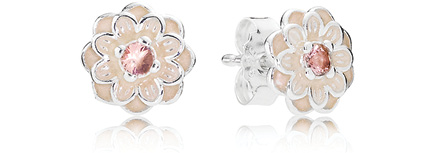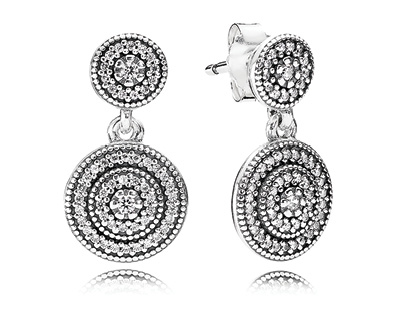- Home
- Media Kit
- Current Issue
- Past Issues
- Ad Specs-Submission
- Ad Print Settings
- Reprints (PDF)
- Photo Specifications (PDF)
- Contact Us

![]()
ONLINE

The PANDORA
Jewelry Story
Editors’ Note
Scott Burger has held his current post since August of 2012. Prior to this, he was Chief Financial Officer, and before that, Chief Operating Officer. He also held the role of CFO with Dormia, Inc. Burger is a graduate of Loyola University Maryland.
Company Brief
PANDORA (PANDORAgroup.com) designs, manufactures, and markets hand-finished and contemporary jewelry made from high-quality materials at affordable prices. PANDORA jewelry is sold in more than 90 countries on six continents through approximately 9,500 points of sale, including more than 1,600 concept stores. Founded in 1982 and headquartered in Copenhagen, Denmark, PANDORA employs more than 15,000 people worldwide, of whom approximately 10,400 are located in Gemopolis, Thailand, where the company manufactures its jewelry.

What was your vision as you built this brand and how has it evolved?
The founder was a goldsmith in Copenhagen and his vision was to deliver genuine jewelry at affordable prices for women around the world. It’s still at the core of what we do today.
He went to Thailand to start the manufacturing facilities there and, last year, those facilities made over 100 million units of our jewelry. Having people able to get into our product at our price points is a cornerstone of fulfilling vision.
How difficult is it to get the message out that you are offering true quality at affordable prices?
I tend to look more at value than price because price is just what we put on the product and value is what the consumer perceives. One of the keys to our success is that we listen to our consumers, even when we don’t like what they say, and we build off of that.
When we price our jewelry, we price it to sell while keeping the spirit of the vision of our founder.

How broad is your consumer base and where is the sweet spot for the brand?
With the growth we have seen in the ring category, and in introducing leather bracelets, we have attracted a younger demographic, so we’re focused on 18 and up.
As we’ve broadened our jewelry assortment, we now offer unique pieces that appeal to different demographics.
Will your growth come from continuing to introduce new collections?
Our bread and butter are charms and bracelets, as that’s what we’re best known for. There has been some innovation – the Disney relationship we announced last year is a good example of that.
When we look at jewelry, charms and bracelets are 20 percent of the pie, but it’s 80 percent of our volume. We believe the future growth will come from telling consumers we’re not just about charms and bracelets – we are a jewelry brand. The success we’ve seen in rings and, more recently, in earrings and necklaces, are giving us a good way to tell that story.
-nb
In terms of distribution, are you growing your own stores?
We’re in about 3,000 points of sale in the Americas. We own only 40 of those, although it’s 80 if we include Brazil.
We’ve always taken a quality over quantity approach. We’re in fewer points of sale today than we were when I started eight-and-a-half years ago. We don’t get too hung up on how many stores we’re going to open – we want to make sure we’re in the best malls and the right locations. If it takes us years to do that, we can wait. We have always taken a disciplined approach.
How challenging is it to have your people really understand the brand and be the ambassadors on the sales side?
Whether we own the stores or not, the challenge is the same. It’s a high turnover business, but we invest a lot in training. We have online POD training that we offer to all of our franchisees and their store associates. One of the requirements we have is that everyone be 100 percent trained when they hit the store on both the product and the values of the business. This gives them a much more well-rounded perspective on the PANDORA brand.

Is the Internet driving sales?
Online sales for jewelry represent about 10 percent. The reason it lags other businesses is because jewelry is a very personal purchase, but people are using the online channels to become better informed.
How much of a focus is growth globally?
It has been highly profitable. We’re now sold in 100 countries across six continents. We’ve always been attracted to new markets and we’ll continue to expand.
How close is the coordination between regions?
Products are largely the same. We love that we have a strong global brand so we tightly control the brand globally.
In terms of distribution, store size and even layout are driven around what the consumer demands as well as the real estate realities in a specific market.
How critical is the after-sales component for PANDORA?
One thing I love about this brand is that we basically own the whole value chain. From design to the store floor, we control the process. This allows us to stand behind our product. We have a warranty that applies but there are many occasions I stood behind the product long after the warranty expired.
Is technology changing the process of how the jewelry is made?
We’re in Thailand because it has such a rich heritage in jewelry, and the artisanship that comes with making it.
One-hundred million units were made in our factories last year and they were touched by close to 40 craftsmen each. It’s a real genuine piece of handmade jewelry.
What excited you about joining the brand and has it been what you expected?
When I started, we had just finished a year where we did $57 million. In 2015, we ended at close to $1 billion for the region.
From that standpoint, I admit that I didn’t think we would have grown this big. When I came in to interview, I knew that it was a special place based on the culture the founder brought to the business. It was a very family-like and values-based environment, and I fell in love with that. We still work very hard to preserve it even though we’re at 1,600 employees in our region now.
Looking back, it’s the best decision I’ve made professionally.
How challenging do you find it to manage the growth?
Yes. In a high-growth environment, scaling people, processes, and technology is the hardest part, and it’s the part where people get into trouble.
Our discipline around the number of points of sale has been an important part of us being successful through that growth because we could squeeze a lot more productivity out of existing stores.•